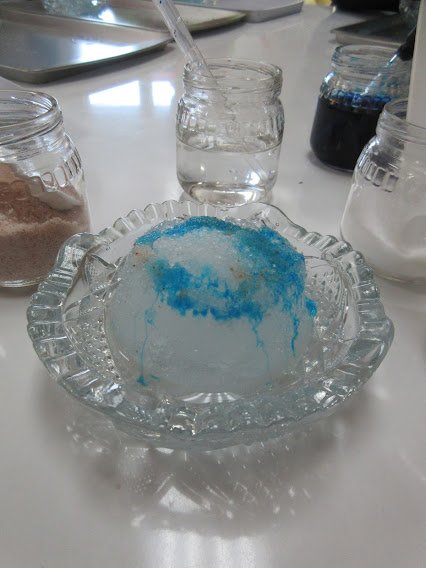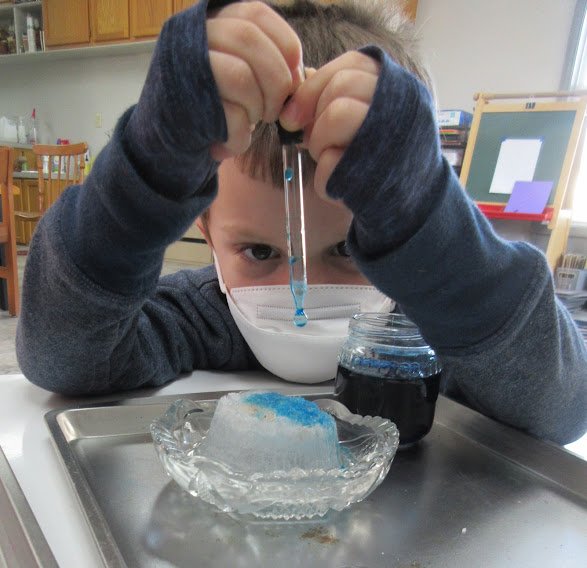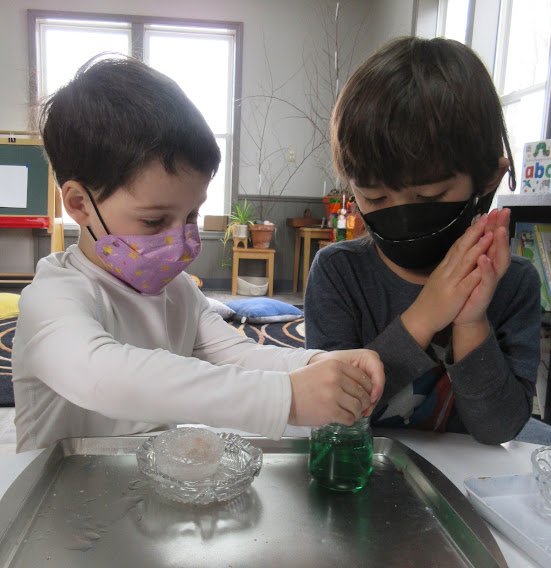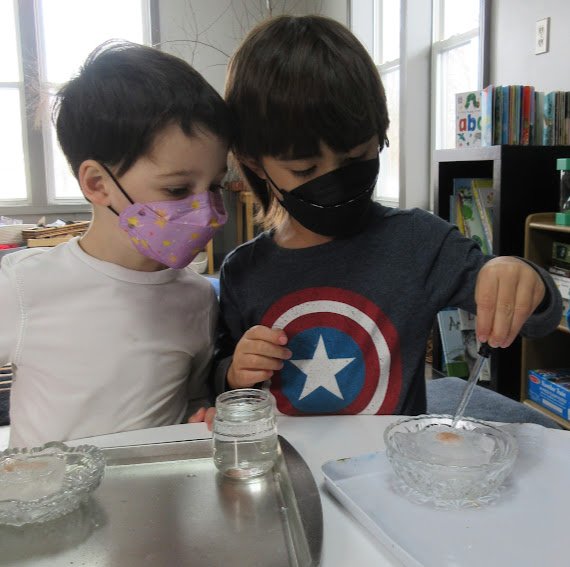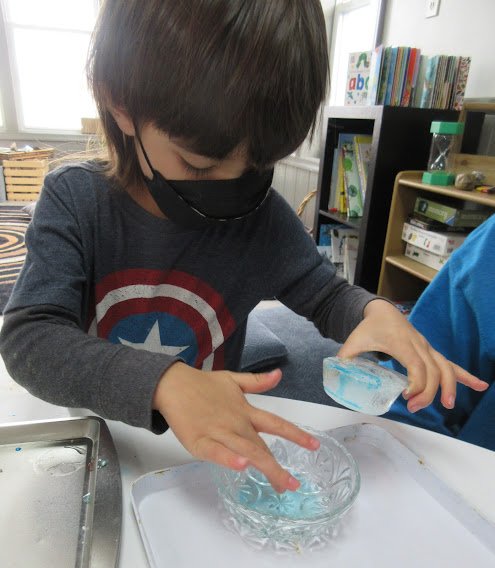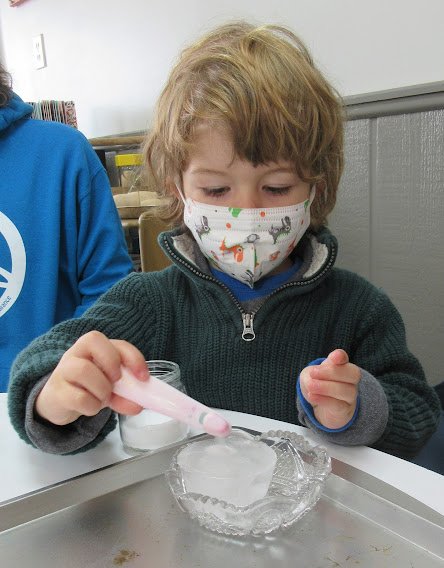Wondering Led to Experimenting
On a walk to the park one winter day after a freezing rain storm, Explorers found some “pink stuff” on the sidewalk. “It’s pink ice!” “It’s tiny rocks.” “What is it?” We looked around and noticed there was no ice on the sidewalk where the pink stuff was found.
The next day we experimented with adding different types of salt to ice– fine salt, coarse salt, and pink salt. We also added plain water, and blue and green water, too, -well just because :)
At first, friends simply enjoyed the process of adding salts and using the pipettes to add the water. Then they noticed the effects. “My salt is wet.” “The salt is stuck.” “The ice is bumpy now.” “The salt is making the ice more water-ly-er!” Friends continued adding salt and water as long as they wished.
The next day, the same activity was offered. This time, friends were more intentional about how they added the salt and water. Some friends sprinkled the salt around the surface. Others mounded the salt into a heap in the center of the ice. “Mine has lots of little holes already” “Mine has one big one.” After a while, we compared the ice that had salt sprinkled all around to the ice that had salt in heap in the center. We noticed that when the salt was sprinkled around, the ice melted more, and there was more water.
Conclusion: We decided that if you use ice to melt snow on the sidewalk, it would work better to spread the salt around rather than heap it in one place. (And we love our new word – water-ly-er!)
“Are we forming children who are only capable of learning what is already known? Or should we try to develop creative and innovative minds, capable of discovery from the preschool age on, throughout life?”

